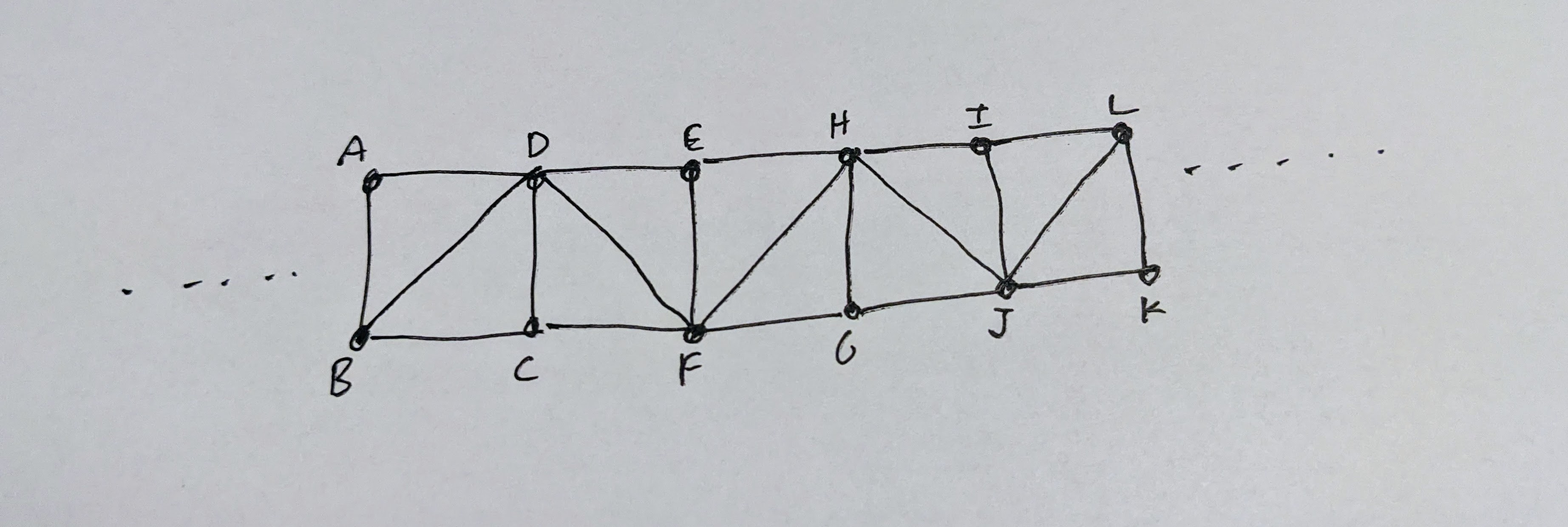Here is one way to do it.
2-colorability case. First let's warm up with the 2-colorability case. Notice that odd-length cycles are not 2-colorable, since the colors have to alternate as you go around the cycle, but then since it is odd length, when you get back to the starting point the parity is wrong. So take a nonprincipal ultrapowerultraproduct of all finite odd-length cycles. The ultrapowerultraproduct consists of nodes all of degree 2, but contains no finite cycles at all. So the ultrapowerultraproduct is 2-colorable, even though none of the factors is 2-colorable, which would violate the Łoś theorem if 2-colorability were expressible.
3-colorability. For 3-colorability, now, we can do something similar. Instead of cycles, consider finite bands made of triangles like this.
 Each triangle will use three different colors, and so if the whole thing was three colorable, then A will get the same color as C, and the same as E, G, I, K etc.
Each triangle will use three different colors, and so if the whole thing was three colorable, then A will get the same color as C, and the same as E, G, I, K etc.
Now, we loop this band around to the starting point, like a giant fastening his belt. If we identify L and K with A and B, for example, then it would not be 3-colorable, since we said A must have the same color as K and different from B.
More generally, using any odd number of steps will mean that the fastened looped belt will not be 3-colorable. This is just like the 2-color case where odd cycles are not 2-colorable.
But now we can proceed as before. Take an ultrapowerultraproduct of longer and longer such odd-length finite looped belts. None is 3-colorable, but the ultrapowerultraproduct consists entirely of infinite belts only (since locally it looks like any big looped belt does, but since the finite looped belts grow in size, it never loops back). So the ultrapowerultraproduct is 3-colorable, but no factor is.
So 3-colorability is not expressible in first-order graph theory.
Alternative argument using bicycle wheels. Emil points out in the comments that one can also use odd-length cycles with a center vertex adjacent to all nodes on the cycle, like a bicycle wheel with an odd number of spokes, and this may be a simpler way of proceeding. These are not 3-colorable, but the ultrapowerultraproduct of larger and larger such wheels will consist of infinite $\mathbb{Z}$-chains attached to a center vertex, and these are 3-colorable. So 3-colorability is not expressible.
$n$-colorability. The previous idea generalizes to $n$-colorability for every finite $n\geq 2$, just by adding more nodes connected to all the earlier nodes.
Omitting ultrapowersultraproducts. One can cast all the arguments via compactness instead of ultrapowersultraproducts. For example, if 2-colorability were expressible, then write down the theory saying that the graph is not 2-colorable, every node has degree 2, and (as a scheme) there are no finite cycles of any particular size. This theory is finitely satisfiable, in sufficiently large odd-length cycles, but it is not satisfiable, since any model of the whole theory will consist of disjoint $\mathbb{Z}$-chains of adjacent nodes, and these are all 2-colorable. Contradiction. Similar compactness arguments work in the other cases in place of the ultrapowerultraproduct.
